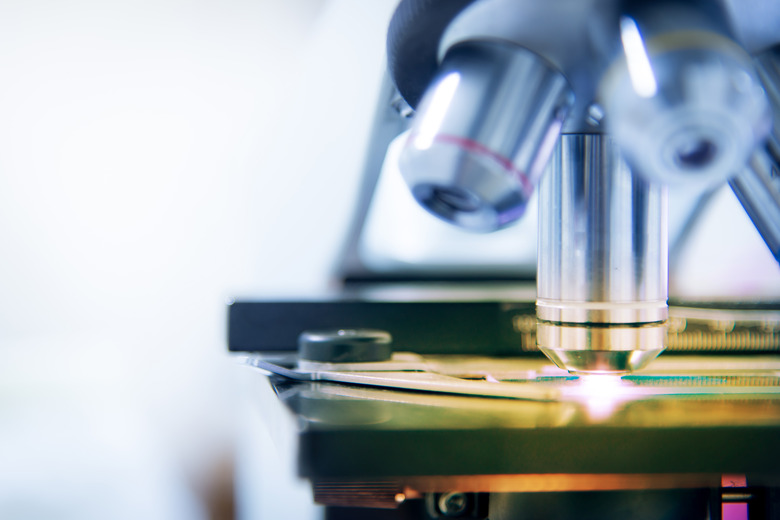Where Is The Nucleus Found In The Cell And Why?
In 1665, Robert Hooke, a British scientist, discovered cells, the tiny compartments of DNA and proteins. Looking at a piece of cork under a microscope, Hooke coined the term "cells" for the different chambers that make up the piece of cork. The two types of cells are eukaryotes and prokaryotics. Eurkaryotic cells are more-advanced cells that have a nucleus while less-intricate prokaryotic cells do not.
Nucleus
Nucleus
The nucleus acts as the brain for the cells — directing cellular activity such as eating, moving and reproducing — and functions as storage for the cell's DNA. The nuclear envelope surrounds the nucleus. The nuclear envelope keeps the nucleic matter contained while allowing proteins and RNA to pass in and out of the nucleus through little holes in the envelope. Eukaryotic cells' nuclei determine what the overall function of the cell is.
Nucleus Location
Nucleus Location
The cell's nucleus is in the middle of the cell's cytoplasm, the liquid that fills the cell. The nucleus may not, however, be right in the middle of the cell itself. Taking up about 10 percent of the cell's volume, the nucleus is usually around the center of the cell itself. As the nucleus directs all of the cell's functionality, its central location is key to passing information to the other components of the cell.
Nucleus Components
Nucleus Components
In addition to the proteins and RNA that pass in and out of the nucleus through the nuclear envelope, DNA is stored in the nucleus in the form of chromosomes, which determine the type of cell it is. DNA and RNA syntheses occur within the nucleus. Also located with in the nucleus is the nucleolus, where ribosomal proteins are formed. Eukaryotic cells typically have only one nucleolus.
Nucleus Centrally Located
Nucleus Centrally Located
The nucleus is located toward the center of the cell because it controls all of the cell's movements, the cell's feeding schedule and the cell's reproduction. Its central location enables it to reach all parts of the cell easily. As RNA and proteins pass through the nuclear envelope, they can do so easily in part due to the neutral location of the nucleus. Eukaryotic cells typically only have one nucleus.
Cite This Article
MLA
Rodriguez, Bailey. "Where Is The Nucleus Found In The Cell And Why?" sciencing.com, https://www.sciencing.com/nucleus-found-cell-why-10056082/. 13 March 2018.
APA
Rodriguez, Bailey. (2018, March 13). Where Is The Nucleus Found In The Cell And Why?. sciencing.com. Retrieved from https://www.sciencing.com/nucleus-found-cell-why-10056082/
Chicago
Rodriguez, Bailey. Where Is The Nucleus Found In The Cell And Why? last modified March 24, 2022. https://www.sciencing.com/nucleus-found-cell-why-10056082/
